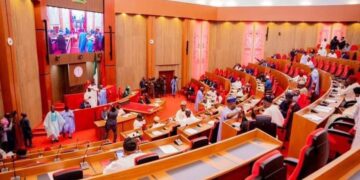Nigeria’s money supply surged by 17.3% year-on-year to N110.3 trillion in February 2025, up from N93.97 trillion in the same period last year, according to the latest Central Bank of Nigeria (CBN) data.
The increase was driven by growth across key components of the money supply, including quasi-money, which rose 14% to N72.7 trillion, demand deposits, which climbed 22.8% to N33.05 trillion, and currency outside banks, which jumped 32% to N4.51 trillion.
Narrow money (M1) also expanded by 21.7% to N36.9 trillion, reflecting heightened liquidity in the economy. A major factor behind this trend was increased government borrowing from the domestic financial system, further boosting broad money supply (M2).
However, despite the rise in money supply, credit to the economy contracted by 13.4% year-on-year to N99.4 trillion, as lending to both the government and private sector declined. Credit to the government fell sharply by 21.8% to N26.5 trillion compared to February 2024, though it saw an 8% month-on-month increase from January 2025.
Similarly, credit to the private sector dropped by 7.4% year-on-year to N74.9 trillion, with a further 1.6% decline from the previous month. This reduction in credit availability suggests tighter financial conditions for businesses and government spending, even as overall money supply continues to expand.
The divergence between rising money supply and shrinking credit highlights a potential disconnect in Nigeria’s financial system, where increased liquidity is not translating into higher lending activity.
This trend could signal cautious lending behavior by banks, reduced borrowing demand, or tighter monetary policies affecting credit flow. The CBN’s data underscores the need for closer monitoring of financial conditions to ensure that money supply growth supports broader economic activity rather than remaining concentrated in select segments of the economy.











































Discussion about this post